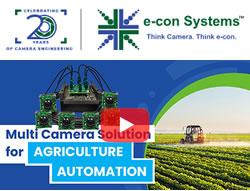6 Tips to Navigate Paperless Farm Management
.jpg)
The paperless revolution has come to the farm. Trading paper for a digitized operational system can streamline and secure farm management, but it also requires careful planning and execution.
6 Steps to Implementing Paperless Farm Management Operations
Even for farmers interested in going paperless, it can be difficult to know how to start. These six essential tips can help make a smooth transition.
1. Shift the Management Culture
Adopting digitalized systems represents a farm-wide cultural shift that must begin at the very top. Farmers, ranchers, growers and other decision-makers must have a positive attitude toward going paperless before expecting everyone else to follow suit. This top-down approach is vital to minimizing initial resistance and paving the way for seamlessly implementing subsequent innovative digital solutions.
2. Identify Key Areas for Digitalization
Determining what aspects of farm management can benefit from digitalization is essential. Managers and administrators must evaluate existing workflows, document management systems and communication channels to pinpoint areas where paper-based processes can make way for digital alternatives.
3. Establish Tools and Requirements
Selecting the appropriate digital tools is crucial for a successful transition. Numerous farm management software solutions and mobile apps are available, offering features tailored to different farming needs. It’s important to go for digital systems that integrate well with existing systems, are user-friendly and provide necessary support and training.
There will likely be a lot of testing involved before finding the right paperless solution. The good news is most providers offer free trial periods, so managers have enough time to decide if a system is a good fit without the financial commitment.
4. Digitize Paper Records and Documents
With digital tools in place, the next step is to digitize existing paper records and documents. This process includes scanning and converting paper-based documents such as receipts, invoices, contracts and field maps into digital formats.
Administrators can organize these digital files in a structured manner using folders or cloud-based storage solutions for easy access and retrieval. They must also implement robust cybersecurity measures to protect sensitive farm data stored digitally. Next, they can decide who gets access to what and which files are available to everyone.
5. Train and Educate Staff
Transitioning to paperless farm management requires adequate training for farmers and workers. It's essential to provide comprehensive training sessions on how to use the selected digital tools effectively. Even basic tasks, like editing documents and attaching files to emails, should be covered. Managers should also offer ongoing support and troubleshooting assistance to address any issues during the transition period.
6. Monitor Progress
The final step in implementing paperless farm management is to monitor progress and look for improvement opportunities. Farm administrators should track key performance indicators such as reduced costs, time saved and overall productivity to understand digitalization efforts' impact better. Additionally, gathering feedback from farmers and farm workers can identify areas for refinement.
Benefits of Adopting Paperless Food Production
Ditching paper has been largely beneficial, far outweighing any potential drawbacks. However, switching can be difficult, especially in an industry that has relied on physical records and documents for centuries — but the advantages are worth the effort.
More Secure Record-Keeping
People lose 7.5% of all paper documents on average. Physical documents are hard to track and can be destroyed or misfiled without anyone noticing. Accessibility is also a concern. Unauthorized persons can quickly gain access to folders and records in locked cabinets.
Document management software has advanced security capabilities that eliminate these hassles. For example, encryption and controlled access rights mean only people with the right authorization can view or edit specific documents.
There’s no more worrying about misplacing files when everything is in the cloud. Mistakenly deleted documents are easily recoverable. Implementing digital systems also allows farm managers to leverage additional safety features like electronic signatures and multi-factor authentications.
Simplified Farm Administration
Going paperless literally means no paperwork. Rather than rely on scribbled notes, stacks of invoices and random inventory lists, farmers can use a simple Excel spreadsheet to manage everything. With all farm data kept in one place, administration tasks become easier and more efficient, saving money and time.
Saves Space
Paper and storage facilities — filing cabinets, bookshelves, desk drawers — take up a lot of space. Over time, the pile gets bigger, often accumulating more quickly than it can be sorted. Digital documents don’t take an inch of physical space.
Better for the Environment
Paper use has a huge environmental impact — around 5% of a tree makes one ream of paper or 500 sheets. Considering the average individual uses up to 700 pounds of paper yearly, that’s a lot of trees lost. Furthermore, some inks and toners may contain non-renewable substances and even volatile compounds that are harmful to the planet. Switching to paperless farming operations promotes sustainability in a sector where it is sorely needed.
Smarter Farming
The implementation of IoT in food production and processing ties directly into paperless operations. All the data the sensors transmit that facilitate smarter agricultural applications are in digital format.
Paperless Farm Management is the Future
The idea of paperless operations has existed since digital technology became the basis of the modern workplace. Now, the agricultural industry is realizing that maintaining documentation doesn’t require physical documents. By following these tips, managers and administrators can seamlessly transition to a simple, sustainable and more secure way of running the farm.
Comments (0)
This post does not have any comments. Be the first to leave a comment below.
Featured Product

